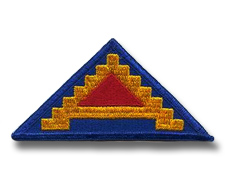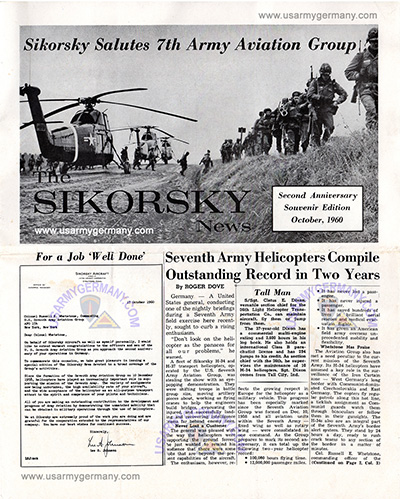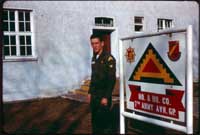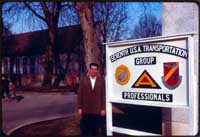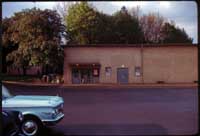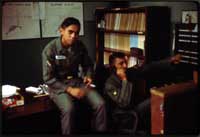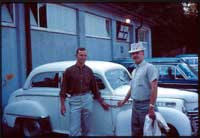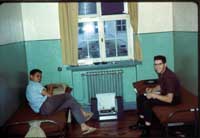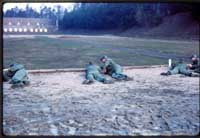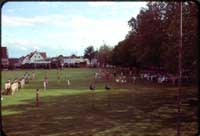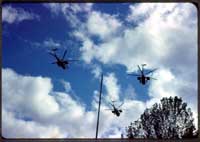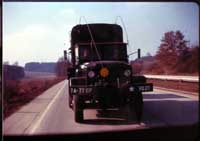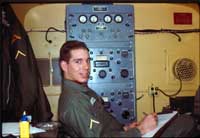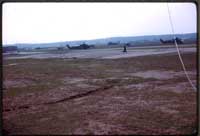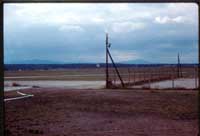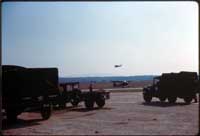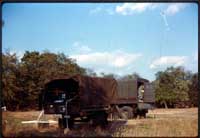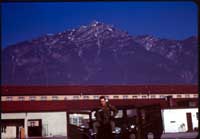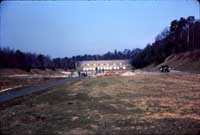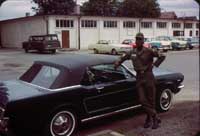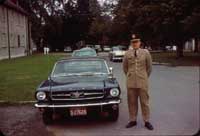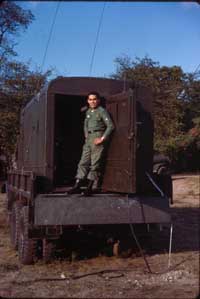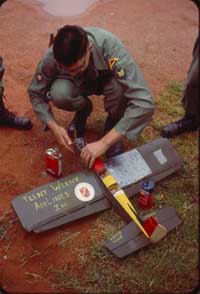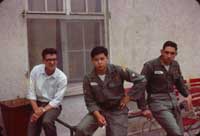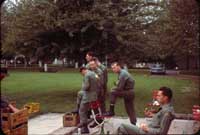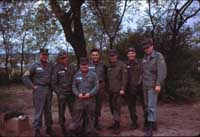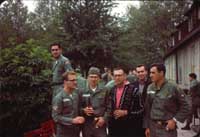| If you do
NOT see the Table of Contents frame to the left of this page, then
Click here to open 'USArmyGermany' frameset |
|||||||||||||||||||||||||||||||||||||||||||||||||||||||||||||||||||||||||||||||||||||||
|
7th
Transportation Group (Aviation) |
|||||||||||||||||||||||||||||||||||||||||||||||||||||||||||||||||||||||||||||||||||||||
|
|
|||||||||||||||||||||||||||||||||||||||||||||||||||||||||||||||||||||||||||||||||||||||
|
|||||||||||||||||||||||||||||||||||||||||||||||||||||||||||||||||||||||||||||||||||||||
|
|
|||||||||||||||||||||||||||||||||||||||||||||||||||||||||||||||||||||||||||||||||||||||
| Group History | |||||||||||||||||||||||||||||||||||||||||||||||||||||||||||||||||||||||||||||||||||||||
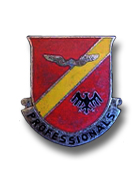 7th Trans Gp
DUI
7th Trans Gp
DUI |
|||||||||||||||||||||||||||||||||||||||||||||||||||||||||||||||||||||||||||||||||||||||
| 1958 | |||||||||||||||||||||||||||||||||||||||||||||||||||||||||||||||||||||||||||||||||||||||
| (Source: Email from Randall Ackley - former 2nd Lt Signal Corps; former SGT, Transportation Avation and Artillery) | |||||||||||||||||||||||||||||||||||||||||||||||||||||||||||||||||||||||||||||||||||||||
| I was assigned to the Headquarters in 1958 and served for a year. We had an Avionics Section. CO was a WW2 Signal Corps captain who had been serving as manager for Officers Clubs until recalled for the Korean War; a sergeant who served as a Wire Sergeant in Korea and myself, who came in last. Neither of the former knew anything about aviation or electronics. I had been to the Navy/Marine Corps Electronics Tech School and Signal Corps OCS. I had been out and returned, first drated for a SW (special warheads) Ordnance outfit but then bumped and drafted to this group. As the only one aware of what we were all about, I became de facto head of our section and created it for the experimental group. Our section was "unsatisfactory" on IG (inspection) when I got there. We were "superior" with one minor problem when I left. Our Group commander, who reported to the 7th Army Transportation Officer, was relieved. He thought aviation was unimportant. So we turned in a "Readiness Report" saying we were "combat ready" although we could not operate in the field. The Deputy Commander took over but also got relieved. The Department of the Army finally sent over a colonel from Washington to take over. He reported that we were totally unable to operate in combat. When I finally left, the section was able to operate in the field at temporary airfields. |
|||||||||||||||||||||||||||||||||||||||||||||||||||||||||||||||||||||||||||||||||||||||
| 1960 | |||||||||||||||||||||||||||||||||||||||||||||||||||||||||||||||||||||||||||||||||||||||
| 1961 | |||||||||||||||||||||||||||||||||||||||||||||||||||||||||||||||||||||||||||||||||||||||
| (Source: STARS & STRIPES, Feb 28, 1961) | |||||||||||||||||||||||||||||||||||||||||||||||||||||||||||||||||||||||||||||||||||||||
| The 7th Aviation Gp is the only aviation group in the US Army. The Gp includes nearly 3,000 men and is broken down into The 7 operating companies are divided between two battalions - the 8th and 54th Trans Bns. The 7th Avn Gp is responsible for the operation of all the cargo helicopters (H-34 and H-37) in Germany. The Gp is equipped with 168 aircraft and provides maintenance (and supply) support for over 800 rotary and fixed-wing aircraft. CO of the Group is Col Russell E. Whetstone. Lt Col Richard L. Long is CO of the 54th Trans Bn and Lt Col Henry H. McKee is commanding officer of the 8th Trans Bn. |
|||||||||||||||||||||||||||||||||||||||||||||||||||||||||||||||||||||||||||||||||||||||
| SUBORDINATE UNITS of the 7th Trans Gp in August 1961 (based on information from STATION LIST, 15 Aug 1961): | |||||||||||||||||||||||||||||||||||||||||||||||||||||||||||||||||||||||||||||||||||||||
|
|||||||||||||||||||||||||||||||||||||||||||||||||||||||||||||||||||||||||||||||||||||||
| In late 1966 or early 1967, the Seventh Army Aviation Group is inactivated and the 15th Aviation Group is activated in its place. | |||||||||||||||||||||||||||||||||||||||||||||||||||||||||||||||||||||||||||||||||||||||
| If you have more
information on the history or organization of the 7th Transportation
Group, please contact me |
|||||||||||||||||||||||||||||||||||||||||||||||||||||||||||||||||||||||||||||||||||||||
|
|
|||||||||||||||||||||||||||||||||||||||||||||||||||||||||||||||||||||||||||||||||||||||
| MISCELLANEOUS
UNIT INFORMATION 7th Trans Gp, Ludwigsburg, is Seventh Army's only aviation group. ORGANIZATION of the 7th Trans Gp in August 1964: |
|||||||||||||||||||||||||||||||||||||||||||||||||||||||||||||||||||||||||||||||||||||||
|
|||||||||||||||||||||||||||||||||||||||||||||||||||||||||||||||||||||||||||||||||||||||
| ORGANIZATION of the 7th Avn Gp in 1965: | |||||||||||||||||||||||||||||||||||||||||||||||||||||||||||||||||||||||||||||||||||||||
|
|||||||||||||||||||||||||||||||||||||||||||||||||||||||||||||||||||||||||||||||||||||||
|
|
|||||||||||||||||||||||||||||||||||||||||||||||||||||||||||||||||||||||||||||||||||||||
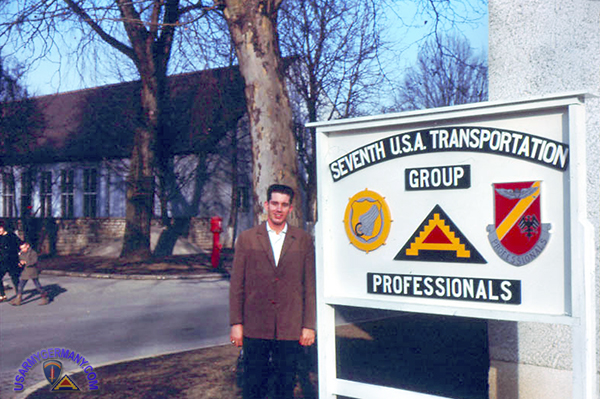 James next to sign in front of Group Hq building, Flak Kaserne (James Allen) |
|||||||||||||||||||||||||||||||||||||||||||||||||||||||||||||||||||||||||||||||||||||||
| (Source: Email from James Allen, Hq Co, 7th Trans Gp) | |||||||||||||||||||||||||||||||||||||||||||||||||||||||||||||||||||||||||||||||||||||||
| I was stationed
with Hq Company, 7th Transportation Group
from 1/1964 to 6/1965. The day I rotated home this unit cased its
colors and merged with (I think) the 10th Transportation Group to
form the 107th Trans Brigade. I have some pictures (35mm slides) of
Flak Kaserne and Ludwigsburg and a lot of the guys I was stationed
with. Our mission, I was told, was that we were the controlling point for all of 7th Army's aircraft, fixed wing and choppers. I was an 053 Radio Teletype Operator and my duties were carried out at Headquarters. Our airfield was removed from Headquarters so I wasn't around the actual flight operations. We also had land-line teletype (encrypted) directly with 7th Army so there were never any messages to or from them over my radio. Radio contact was used to communicate with the Battalion Headquarters and subordinate companies. We had three battalions under us: the 205th was headquartered right there on the post with us, the 8th was headquartered at Hanau, and the 41st was headquartered at Finthen. There had previously been an additional battalion (I'm pretty sure it was the 54th) but it was gone when I got there. Each battalion had several companies and to my knowledge they were pretty well scattered all over Germany. I'm picturing my SOI in my mind and I can remember there was a whole page of companies but I can't recall any specific one. That is a pretty general view of what I recall about the group. I went to Finthen one time but never did go to Hanau. While I was in Germany I went TDY on two occasions - once for school at Kaiserslautern and the other was a duty TDY at Garmisch. We went to the field twice during my tour. We had a monthly "alert" and I was usually in the radio truck that went out with the unit. There are other things in the daily routine I remember but I don't want to waste your time with information that is of no use to you. Our field site was at Darmstadt - next to a missile site. The TDY to Garmisch was to provide communication back to Group Hq. for Colonel Dyer. He was attending some type of meeting and he was less than enamored with the German telephone system. He wanted to be sure he could get through so he took a radio truck. I remember one of the nights we had shut down the radio and all four of us went to the Ice Revue at the Casa Carioca. During the show we got word that the radio had to get back on the air. Sgt. Strader and John Griffin volunteered to go back and Wenlund and myself got to stay and see the rest of the show. I still have my program from that night. Another thing about that TDY is my PFC stripes came down while I was down there. We sometimes went to a swimming pool just across the river in Marbach. The river was just north of Flak and it wasn't too much of a walk to the pool. There were a lot of us spent a number of Saturday and Sunday afternoons there soaking up the sun and admiring the bikinis. We didn't do a lot of swimming because it was so crowded you couldn't really swim. Another thing or two I have recalled - One is the annual "Fly-In". This was a Public Relations event in which civilian pilots from different countries in Europe flew in to our airfield in Ludwigsburg. I don't recall how many diferent countries responded but it was several. This was a Saturday & Sunday event. Two - on June 23, 1964, a nuclear device was being transported from one site to another. I do not know from where or to where - I only recall that my outfit was the designated radio contact for a certain small portion of the movement. I recall it so well because that date was my 24th birthday. Another small recollection - in the winter of 1964/65 the weather stayed so bad (low ceiling) for so long the pilots were about to lose their flight pay because they couldn't get their hours in. They wanted to fly up and down the autobahn to keep from getting lost, but it was against the law to fly as low as they needed to. They finally flew up and down the Neckar River there in Ludwigsburg to get their hours in and not lose their pay. Just in case it might be of some use to you, I want to mention some of the other units that were on Flak Kaserne while I was there. One I remember very well was "B" Company, 26th Signal Bn. I don't know what their mission was, but it seemed they stayed in the field (or maybe I am thinking of 1st Signal). The 569th Ordnance Company was also on Flak. The other four I am not sure exactly what level of unit was there, but there was some element of 1st Signal, 4th Transportation, 32nd Transportation, and 6th M.I. On the tape I said "4th Trans. Bn." but I don't remember if it was their HQ Company or just a subordinate company. I wish I could remember more. I have noticed on your site that you have "A" Co., 26th Signal at Heilbronn. I wonder if that is the unit that was our maintenance and spare parts support. Also, when I went TDY to Kaiserslautern for school, it was to learn a new crypto device. The unit there was the 440th Signal Battalion of the 505th Signal Group. When I arrived at Group in January of '64, the Company Commander was Captain Dew and First Sergeant Griney was our first sergeant. At some point during my tour, they were replaced by Captain Treat and First Sergeant Taylor. At the time of my arrival, there was a putzfrau for our barracks. We cleaned our rooms and were responsible for the latrines - and she cleaned the offices, day room and swept the halls. Unfortunately, that disappeared soon after I got there. We had two duty rosters, KP and duty driver. Our KP was night KP. We went on at 6 PM and got off at 4 AM. Lots of times if we finished what had to be done, the night cook would let us go early. The next day after KP we were off until noon. A roommate would wake us when he came to lunch so we could eat before we went to work that afternoon. There were two KPs each night to peel potatoes, pan the bacon and whatever else was required to get ready for breakfast. At some point in my tour, some "Day KP's" were caught sleeping twice the same day, so they inherited the potato peeling. From this point on, we only had to supply one night KP. It made duty a little lonelier, but it only came around half as often, so I guess that was a fair trade-off. As duty driver, I visited all the Kasernes in the Ludwigsburg area on numerous occasions. I don't recall the exact hours involved but we got the next morning off as with KP. The Group Commander when I arrived was Colonel Dyer and our Sergeant Major's name was McBride. Sergeant Major McBride rotated during my tour but I can't recall his replacement's name. I remember he was an older man and he broke his leg skiing in the winter of '64-'65. Colonel Dyer passed command to Lt. Colonel Robert K. Moore on July 7, 1964 in a ceremony held at Pattonville. The Communications Officer when I arrived was Major Buck. The sergeants at that time were Master Sergeant Moore, Sergeant E-6 or E-7 Deane and Sergeants E-5 Strader & Page. Sgt. Strader was the radio sergeant and Sgt. Page was over the crypto room. Soon after our first field exercise Major Buck was replaced as Communications Officer by Captain George W. Kieffer. He was still there when I left for home. When I left we only had two sergeants, Sgt. E-5 Jerry Bow (crypto) and Sgt.Gibbs (radio). I can't remember whether Sgt. Gibbs was an E-5 or E-6. Our radio net was on the air from 9 AM to 4 PM Monday through Friday. Of course during alerts, field exercises and other training we were on whatever time was required. Our maintenance was at Heilbronn. The transmitter we had was bad about blowing capacitors so I made quite a few trips up there. We also ordered our spare parts through them and we often would run up there in a jeep to pick up parts. In October of '64 we were required to pack up and move to another building on Flak. A larger unit, 15th Transportation, was moving on post and the building we moved to was not large enough for them. It was not nearly as nice as the barracks we moved from. Another thing I remember is "George's". This was a gasthaus about a 10 minute walk from Flak. George was an ex-GI who had married and gotten out in Germany. He had this little gasthaus and we often went down there for a bowl of ox-tail soup and a beer. James Allen (Source: Letter from James Allen) When we learned that Group was going to close, we decided to do two things. First, we decided to have a scarf-burning ceremony when they came off the first of June. Since they would be replaced before scarves came back in that fall, they would no longer be needed. I don't think anyone really enjoyed wearing them all the time as we had to, with fatigues, although I must admit I brought one home for a souvenir. The other thing we were going to do was build a model plane, fly it until it ran out of fuel, and then let it crash to signify the demise of the Group. Unfortunately, we were unable to get it started on the day I was taking the pictures at the beer party. I would like to identify a few of the buildings on the map of Flak Kaserne in case that information is useful: When I first arrived at Flak, our radio shack and motor pool were next to each other in (I believe) 1715. If not 1715, then 1712 for sure. Later, radio was moved to the Staff building and the motor pool moved to 1725. I don't remember tennis courts in the corner of the ball field nor a gate there. James CORRECTIONS I am contacting you in regard to information I sent to you about 7th Transportation Group listed under Army Aviation. While I was in Germany my family and I exchanged tape recordings in addition to traditional letters. Mother saved a lot of them and I have several hours of recordings I sent home. In going through one of them the other day I discovered I had sent you some erroneous information. In my first communication with you I spoke of working the radio during the movement of a nuclear device. That was not on my birthday as I stated previously. Going through the tapes I have found that I was TDY in crypto school at Kaiserslautern that week. I remember I was supposed to be off-duty the day of the movement and I thought it must have been my birthday. I guess I was supposed to be off after having KP or duty driver. I remember Captain Kieffer giving me another day off instead. The move must have been in July or August as John Griffin had gone home on the 1st of July and if it had been in June he would have been operating the radio as he was lead operator until he left. Also, our unit moving to the other barracks was delayed until the end of the year. It was originally scheduled for October but we ended up moving over the Christmas/New Year's holiday period. |
|||||||||||||||||||||||||||||||||||||||||||||||||||||||||||||||||||||||||||||||||||||||
|
|
|||||||||||||||||||||||||||||||||||||||||||||||||||||||||||||||||||||||||||||||||||||||
| Related Links: |
|||||||||||||||||||||||||||||||||||||||||||||||||||||||||||||||||||||||||||||||||||||||
